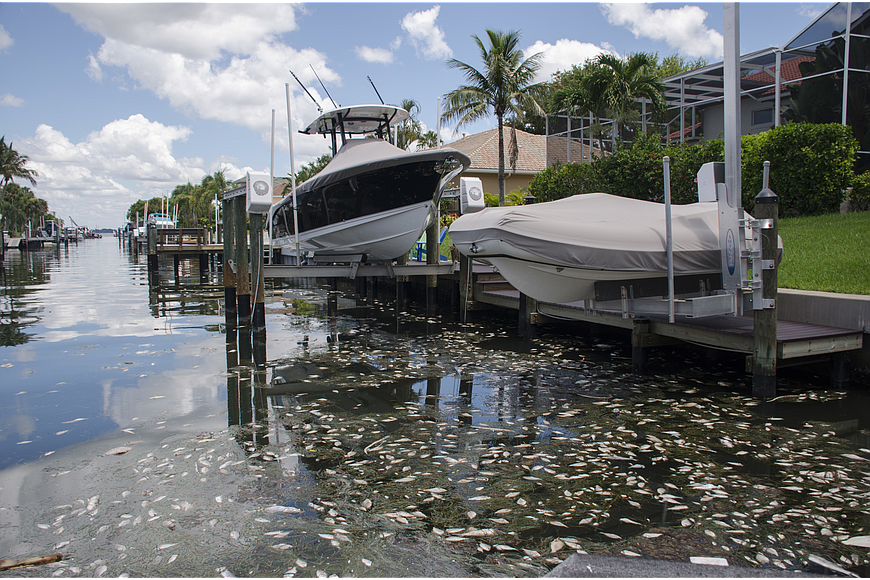- July 26, 2024
-
-
Loading

Loading

It’s been nearly a week since Longboat Key’s Public Works Department last deployed its team to remove dead fish and other sea life from gulf beaches and bayfront canals.
The last time officials called out a team for cleanup duty was Sept. 5, when canals were cleared in mid-island neighborhoods, and even then, less than 650 pounds were collected.
In total, though some sand and other material might skew the weight figures, crews have disposed of more than 165,000 pounds since Aug. 6.
Longboat Key officials said they have spent more than $40,000 and 777 employee hours on the effort. Clean-up work will continue as needed.
“We are not through it yet, but we have had some relief,” said Tom Harmer, town manager, at a Sept. 11 town commission meeting.
One of the challenges has been the dynamic nature of the cleanup. A canal choked with dead fish one day can be clear the next, depending on winds and tides.
“It’s a constantly changing event,” Public Works Director Isaac Brownman said.
Southwest Florida has been hit with one of the worst red tide outbreaks in years this summer. The bloom, which scientists say began well offshore about a year ago, first brushed the beaches of Naples and Fort Myers, then began moving north through coastal waters.
Last weekend, dead fish began showing up off Pinellas County beaches. Leaders there deployed trawlers and other boats to skim the gulf of dead sea life before it reached land, though officials there call the outbreak “overwhelming.”
Maps from the Florida Fish and Wildlife Conservation Commission indicate levels of Karenia brevis, the toxic algae responsible for red tide, trending lower in Sarasota County in the week of Sept. 1-7.